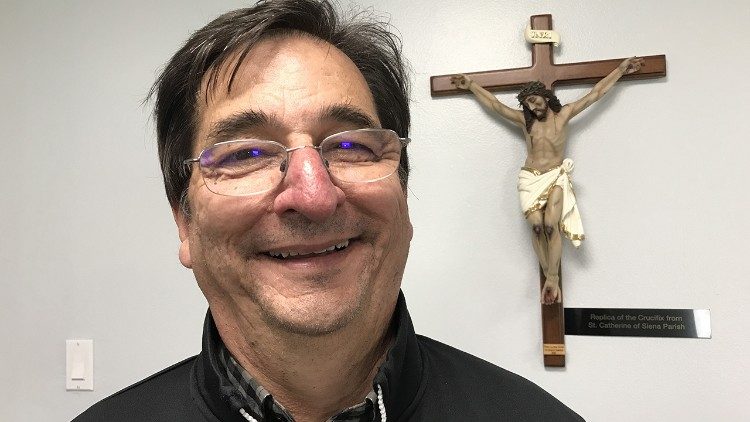Bishop Tyson began the synod process in his diocese with those on the peripheries – migrants – and hopes to better align services in his diocese in light of the synod process.
By Sr Bernadette M. Reis, fsp – Vatican News Journalist & Special Envoy from Synod’s General Secretariat
Bishop Joseph Tyson is the Bishop of Yakima and a member of the North American Continental Team representing the United States Conference of Catholic Bishops. The Diocese of Yakima, established in 1951, is located in central Washington State. About 75% of Catholics in the Diocese of Yakima are Spanish-speaking.
During the writing retreat currently underway in which delegates are composing the response to the Working Document for the Continental Stage of the Synod, Bishop Tyson granted an interview with Vatican News. He spoke about the synodal process in his diocese, how the synod continues to unfold there, and what the synod logo expresses the role of the Bishop.
Synodal process in Yakima
“It was a great process. We actually started with migrant workers. We really tried to go straight from the beginning to folks who might seem most marginal to make sure we heard those voices. We had a number of parish listening sessions, and then we gathered about 400 leaders from across the diocese just to look at what was said. And there were actually six major themes that emerged out of our own synod process. There was a big focus and concern for youth. I would say that was the top priority and top concern that emerged in the Yakima diocesan synod process.
Continuing the synodal process
“There’s six priority areas and we’re doing some strategic planning around that. Next year, we’re going to focus just on the priority of youth. It’s kind of what Pope Francis talks about the renewal of structures, how to better align our own service as a diocese to our parishes and vice versa in light of the synod process. Because in a certain sense, what we preach is not always what people assimilate. What we teach is not always what people learn. What we say is not always what people hear.
“The end game of the synod process is not necessarily about goals and outcomes. It’s about this deep listening, synodality as a way of life. And that’s what we’re about in the Diocese of Yakima as a result of the synod process.
How the synod process has shaped him as a bishop
“When we did the Feast of our Lady of Guadalupe, one of our parishioners took the logo for the synod, where you have the guy in the wheelchair, and the elderly, and then in the middle is the bishop. It was very creative.
“The role of bishop has to have his ear cocked, listening to the flock. And you actually have to be kind of with the flock in the middle of the flock. That’s why I love that logo for the synod process. I think it really captures the role of the bishop kind of being in the midst of the menagerie of parishioners, the cambalache, as we would say in Spanish – the great collection of personalities and people who make up parish life.”

